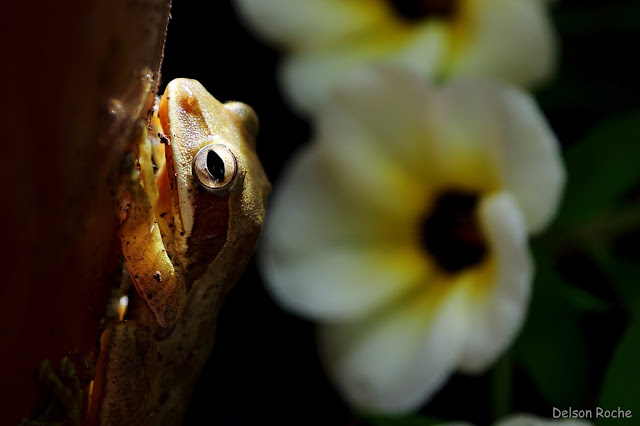"Are you in a mood for photography?' is what Aarina asked me.
"Yes" I excitedly replied.
She then directed me to a place in our backyard where she had spotted a frog. It was a lovely, 'Common Tree Frog' and was quietly perched on a flower pot. I armed my camera and slowly inched towards the frog, clicking as I approached it. Perhaps when I reached the frogs zone of comfort, it leaped- an explosive massive leap that had me startled. It was such an effective method of escaping from an enemy- so surprising, that catching a frog can be difficult business whether you are a hungry bird, reptile or a camera wielding human.
Not all, but most tree frogs are arboreal. Their toe pads and a claw shaped toe help them climb a variety of surfaces.
Many amphibians, including this cute little frog have a neat row of teeth on their jaws, but these are used for defence or as a way of gripping their prey. They do nothing to break the prey in easily swallow-able chunks. No amphibians can chew and this is the reason why, when they seize one end of a worm, methodically rake the length of it with their forefeet to remove any bits of sticks or earth that might be stuck to it. The tongue helps the process of swallowing by producing a lot of mucus and so do their eyes! Yes, eyes are required to swallow their food. All frogs and toads blink when they swallow. Their eye-sockets have not bony floor, so when they blink, the eye balls are drawn into the skull and make a bulge in the roof of the mouth, which squeezes the lump of food back to the throat.
Pretty nifty trick that one.


















